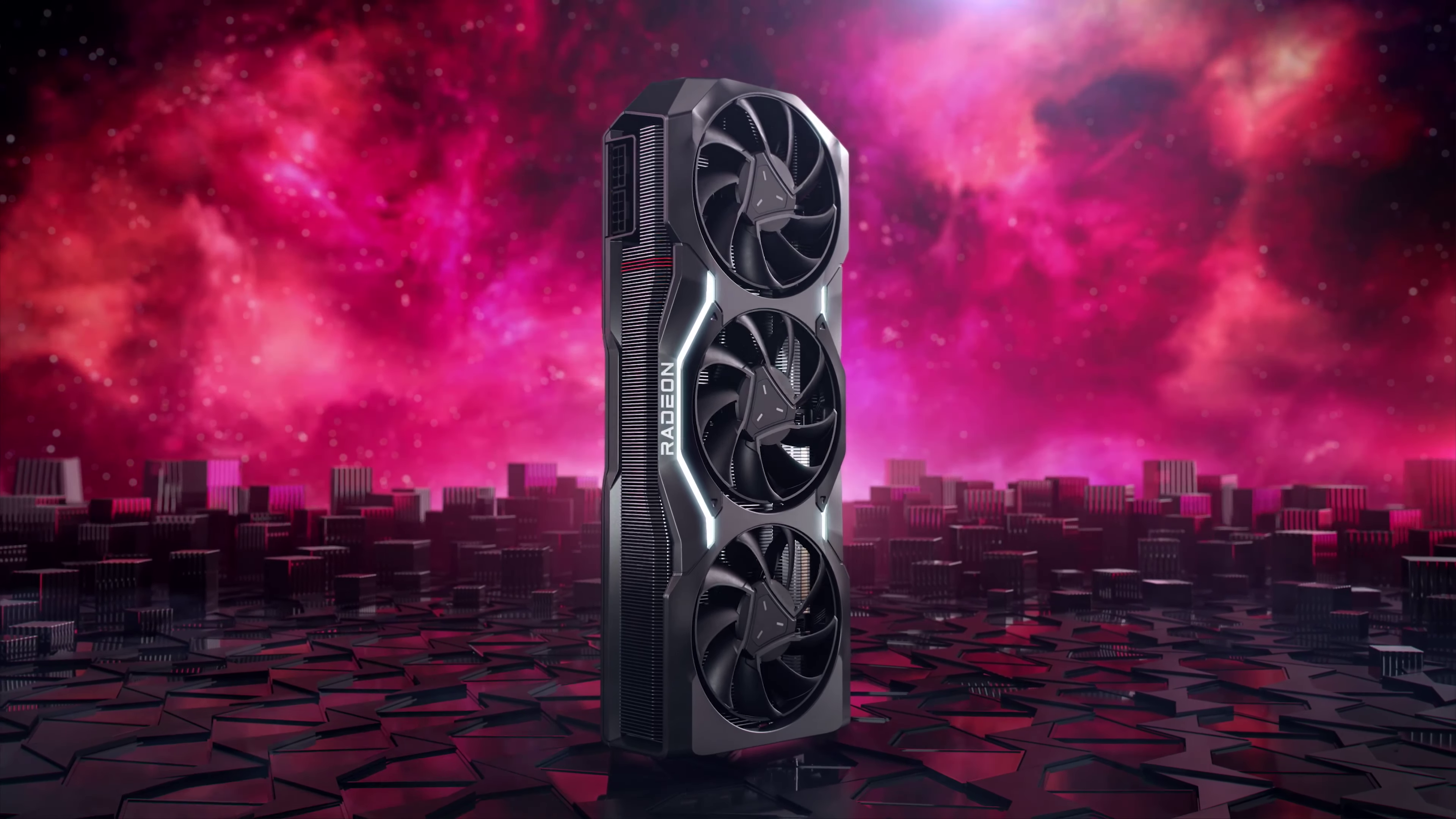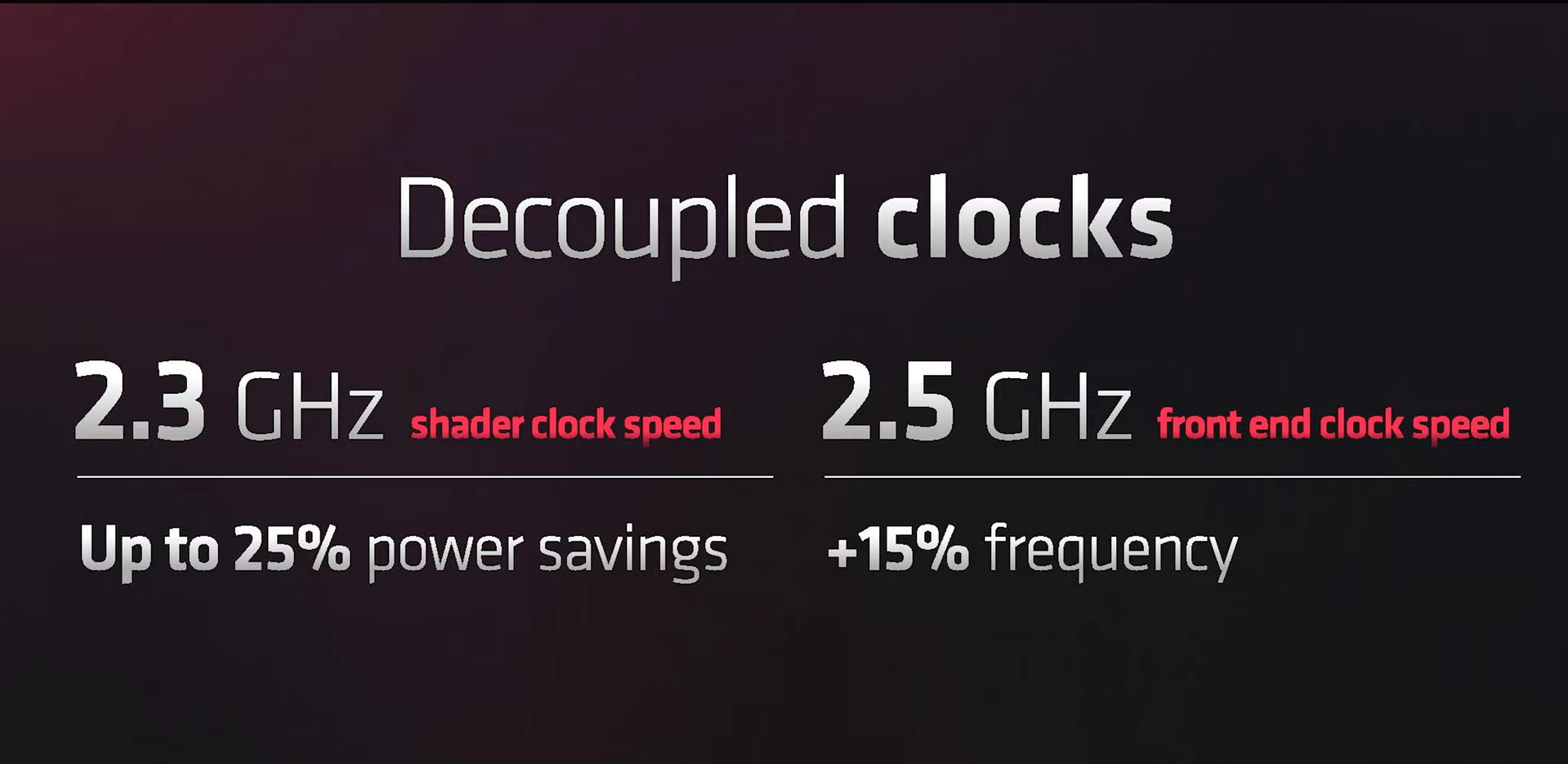AMD RX 7900 Series Can Scale Up to 3.0GHz, 20% Higher Than AMD’s Specified Boost Clocks

AMD have announced their next-gen RDNA3 ‘Radeon RX 7000‘ promising a substantial increase in performance over last generation. Despite the performance being adequate and a proper generation-on-generation leap, it still deviates from the leaks. One example is the suggested near 4.0GHz clocks of Navi31. In reality, the current highest end Navi31 SKU, the 7900 XTX can go as high as just 2.5GHz. You get the picture from here.
RX 7900 3GHz Clocks
PCWorld was invited to AMD’s RDNA3 reveal where they ‘accidentally’ quoted an official metric from AMD regarding the clocks. This comes in as a major shock because as stated above, the boost clocks on the highest end GPU are 500MHz lower than what these GPUs were designed for.
Question : “Is the chiplet design causing a limitation in frequency, what do you think?”
Answer: “I don’t think so, they’ve said they designed it to scale up to 3GHz”
So this puts up the question, should we expect higher clocks from AIB partners? Luckily for us, coreteks shared that AIBs can currently provide only 3% higher clocks with the initial drivers. That’s roughly around 2.575GHz, yikes! It appears that AMD’s RX 7900 XTX is already at its limit.
https://twitter.com/coreteks/status/1588329053530251265?ref_src=twsrc%5Etfw%7Ctwcamp%5Etweetembed%7Ctwterm%5E1588329053530251265%7Ctwgr%5Edc135f9e5b3240ae15a25e50a308471853c094a2%7Ctwcon%5Es1_&ref_url=https%3A%2F%2Fvideocardz.com%2Fnewz%2Famd-radeon-rx-7900-gpus-are-designed-to-scale-up-to-3-0-ghz
In fairness to AMD, a 54% performance per watt increment over RDNA2 is not something to take lightly. Against the 4090’s insanely high 450W TDP, the 7900 XTX consumes almost 100W less and is just 5-10% slower. Team red have achieved this efficiency using various techniques. Among the most important of them being ‘decoupled clocks’. Basically, the shaders run at a slower clock depending upon the workload. This variation in frequencies can save almost 25% of the total power used.

Conclusion
While AMD have not been able to keep up with the leaks, the actual performance is still breathtaking. A few people speculate that AMD is saving the best dies for their upcoming RX 7970XT3D. Though, we lack sufficient information to back such claims. All in all, RDNA3 is a sigh of relief for those looking to upgrade. The pricing will surely push NVIDIA into a corner forcing them to cut costs.
| SKU | Chip | CU (128 Shading Units/ 1 CU) | CU (64 Shading Units/ 1 CU) | FP32 | Max Clock | Cache | Memory Bus | VRAM | Memroy Spec | Speed (Gbps) | TDP | ||||
| RX 7970XT3D | Navi31 | 96 | 192 | 12288 | 2.5GHz? | 192MB? | 384-bit | 24GB | GDDR6 | 20 | 450W | ||||
| RX 7900 XTX | Navi31 | 96 | 192 | 12288 | 2.5GHz | 96MB | 384-bit | 24GB | GDDR6 | 20 | 355W | ||||
| RX 7900XT | Navi31 | 84 | 168 | 10752 | 2.4GHz | 80MB | 320-bit | 20GB | GDDR6 | 20 | 300W | ||||
| RX 7800XT | Navi32 | 60 | 120 | 7680 | – | 64MB | 256-bit | 16GB | GDDR6 | 18 | 270W | ||||
| RX 7800 | Navi32 | 56 | 112 | 7168 | – | 48MB? | 256-bit | 16GB | GDDR6 | 18 | 250W | ||||
| RX 7700XT | Navi32 | 48 | 96 | 6144 | – | 48MB? | 192-bit | 12GB | GDDR6 | 18 | 200W | ||||
| RX 7700 | Navi32? | 40 | 80 | 5120 | – | 40MB? | 160-bit? | 10GB? | GDDR6 | 18 | 175W | ||||
| RX 7600XT | Navi33 | 32 | 64 | 4096 | – | 32MB | 128-bit | 8GB | GDDR6 | 18 | 150W | ||||
| RX 7600 | Navi33 | 28 | 56 | 3584 | – | 32MB? | 128-bit | 8GB | GDDR6 | 18 | 130W | ||||





